The Elephant feed plant is also known by its scientific name, Portulacaria afra. It is one of the bigger succulents and is native to South Africa. It is commonly known by this name because elephants are known to frequently seek and graze on this plant.
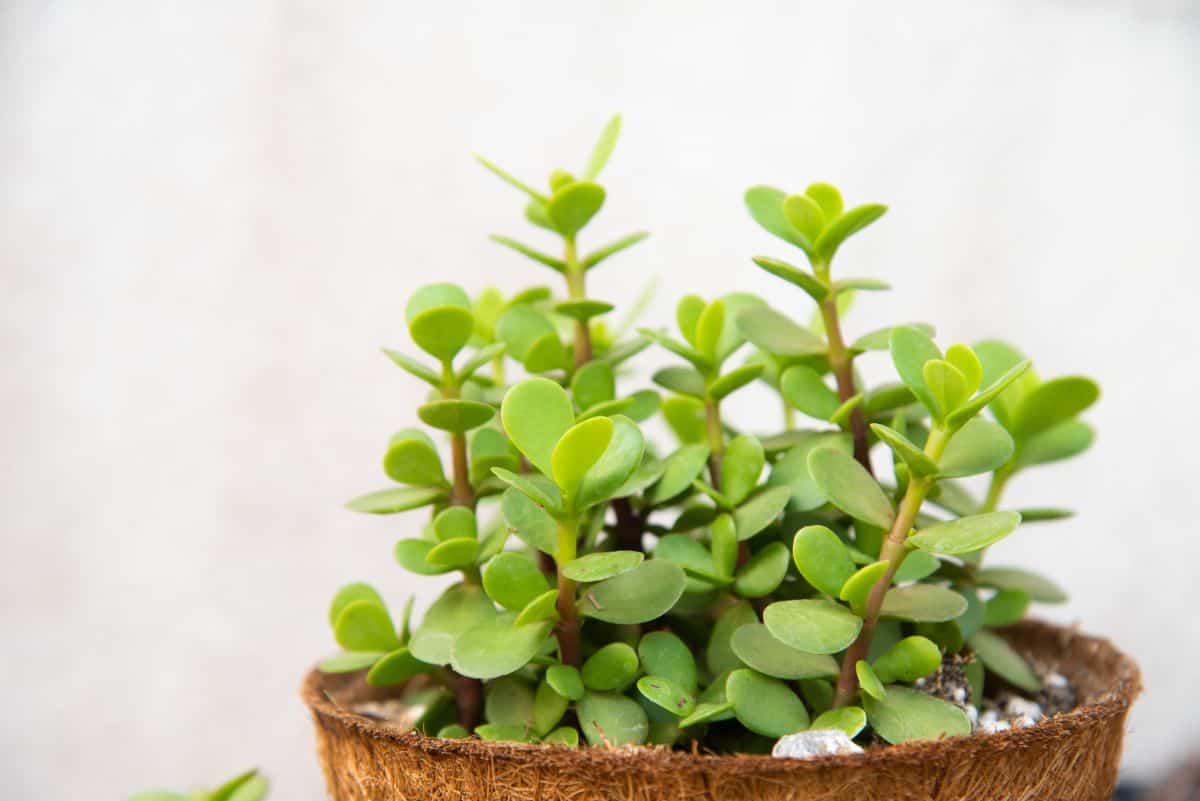
The Elephant feed plant is a perennial plant, meaning that it lives for more than two years, and, with the proper care, it should flower every year.
This plant has a particularly sweet nectar, making it very popular with both insects and birds. They are attracted by the strong scent of the nectar.
Unlike many other succulents, the leaves of the Elephant feed plant are edible and can be eaten either raw or cooked. They have a slightly sour taste and can be added to dishes such as stews and soups, and even salads, to enhance the flavor.
The Elephant feed plant is a very popular bonsai plant. The shape can be formed and controlled quite easily with regular trimming. It will grow very tall, to a height of a maximum of about 15 feet, if not pruned regularly.
Because of the shape of its leaves, and their surface area, the Elephant feed plant is extremely efficient in its absorption of carbon in the atmosphere. This makes it highly suitable and beneficial as an indoor plant.
Whether you are cultivating your succulents indoors or outdoors, the Elephant feed plant would be a wonderful addition to your collection.
Jump to:
Elephant Feed Plant Appearance
| Name: | Portulacaria afra |
| Soil: | Well-drained soil |
| Blooming: | Late spring or early Summer |
| Light: | Full sun to partial shade |
| Water: | When the soil is completely dry |
| Propagation: | Stem cuttings |
The Elephant feed plant is a tall, upright succulent. If left unpruned, it will grow very tall, to a height of up to 15 feet. The branches will spread out so that it develops the appearance of a tall shrub.
These plants will not flower for the first 2-3 years, but eventually, they will bloom with very small, bright pink flowers. The flowers are star-shaped, and they will usually start to appear as winter is drawing to a close and the weather starts to warm up. By the early weeks of summer, they should be in full bloom.
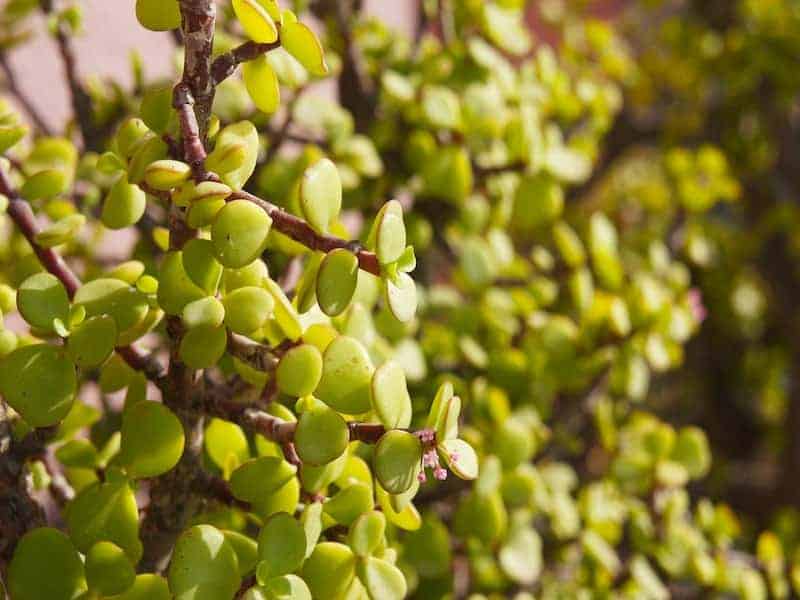
Buy it from:
The leaves of the Elephant feed plant are roundish in shape, and very fleshy. Their color is usually a bright shade of green, while the stems are a light brown with a reddish hue. The stems are very thick and gnarled.
There is also a variety with variegated leaves. These leaves are an attractive combination of light green and off-white.
Caring for the Elephant Feed Plant
In areas where the climate is very dry, the Elephant feed plant is often used to create a hedge. It will do well in dry conditions, and is not seriously affected by drought.
If you wish to cultivate these plants in containers, they will need fairly large pots, at least 3 gallons or bigger. If you plant them in smaller pots, their growth will be restricted, and they will not reach their full height. They also will not be able to spread their branches out to their full extent.
It is a good idea to fertilize your Elephant feed plant every year, towards the end of winter or beginning of spring, using a commercial fertilizer for indoor plants. These are readily available from your local nursery or garden center.
Light
No products found.
The Elephant feed plant needs a lot of sunlight, at least 6 hours of direct sunlight every day. It should be planted in an area that has full sun to partial shade. If you want to keep it as an indoor plant, select a sunny spot in a warm room in the house.
If you have started your Elephant feed plant off as an indoor plant, you may decide to move it outdoors as it reaches its maximum growth and full height. When transitioning it from indoors to outdoors, it is advisable to do so gradually, over a period of a few days.
A sudden and drastic change in light and temperature conditions could cause trauma to the plant. Take it outside for one hour on the first day, 2-3 hours on the second, and so on, until the plant has become accustomed to its new environment.
Water
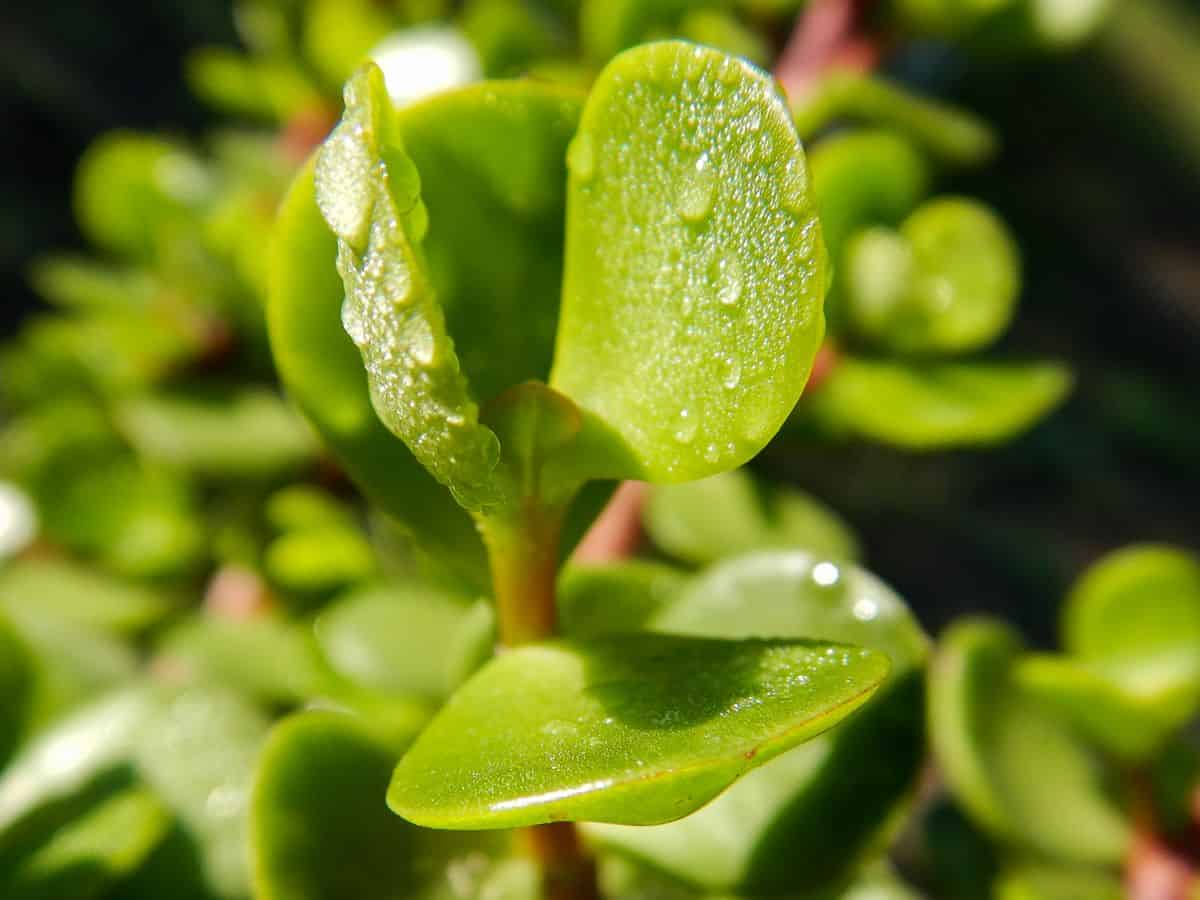
When watering your Elephant feed plant, take care not to over-water it. Over-watering is one of the biggest mistakes that some people make with their succulents.
If you water your Elephant feed plant too frequently, it will cause severe damage to the foliage, and eventually, the plant will start to lose its leaves.
A good method to use for watering these succulents is to soak the soil thoroughly, and then leave it to dry completely before watering again.
It is sometimes difficult to know exactly when to water. A useful tip is to test using a long, thin wooden stick, like a chopstick or a kebab skewer. Insert the stick into the soil, right down to the bottom of the pot.
If the stick is completely dry when you pull it out, it is time to water the plant. It will usually need watering no more than every 4-5 days, possibly even less frequently.
Temperature
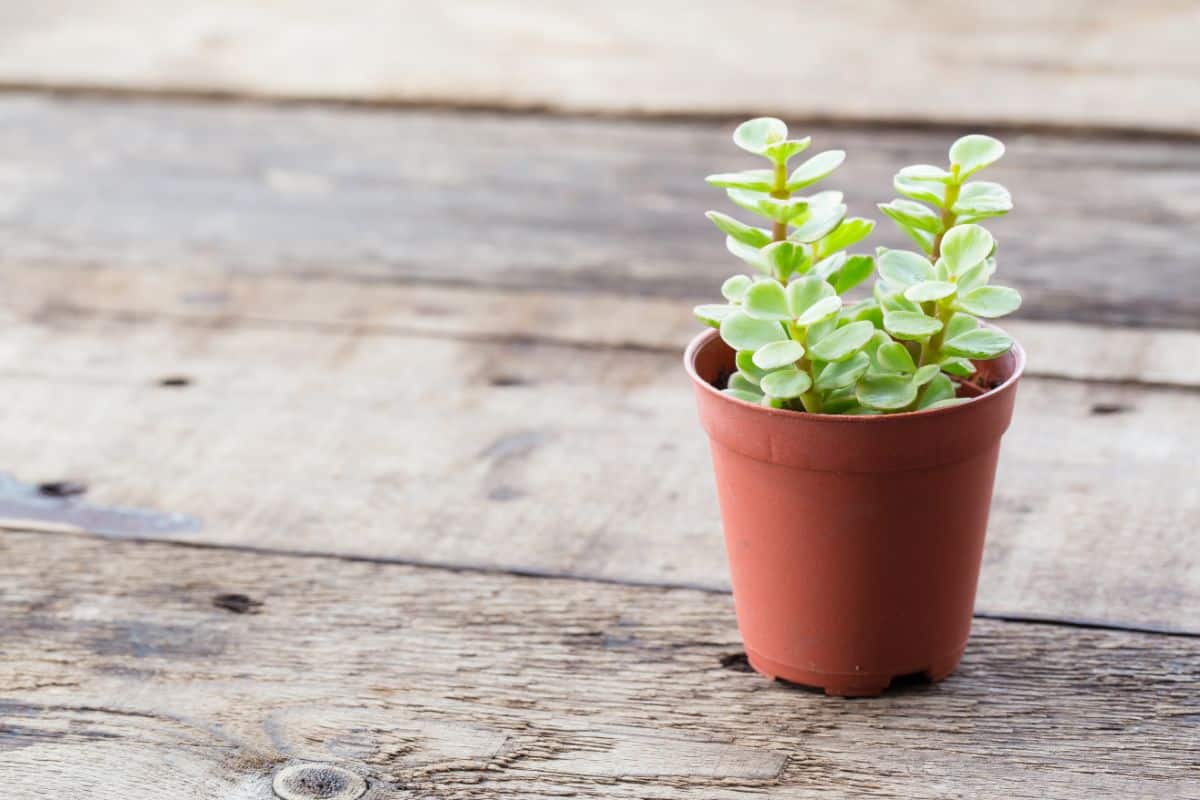
The Elephant feed plant is not tough and is not very hardy. Therefore it will not do well in extreme cold. The lowest temperature that it can tolerate is between 25°-30° Fahrenheit.
If your plants are outdoors, you should bring them inside if you are expecting a sharp drop in temperature overnight.
These plants are not frost resistant and will start to display signs of damage if exposed to heavy frost.
If you are cultivating your Elephant feed plant as an indoor plant, keep it in a warm room where the temperature is not subject to sudden changes. A sudden sharp drop or rise in temperature will affect the plant’s general well-being and growth.
Soil
The Elephant feed plant is not a terribly fussy plant when it comes to soil requirements. While it is able to tolerate poor soil conditions fairly well, the ideal soil is one with a neutral pH balance of between 6.6 - 7.2. However, one soil type that should be avoided at all cost is clay.
Whatever type of soil you have, it is essential that there is good drainage. If the water cannot drain off efficiently, the roots will always be wet, and this can cause mold and fungal infections. This will eventually make the roots rot, and the plant will ultimately start dying.
Propagating the Elephant Feed Plant

The Elephant feed plant is fairly easy to propagate. The most successful method of propagating these plants is with cuttings. The best season to do this is in early summer.
When cutting off a stem, be sure to use clean, preferably sterile, sharp gardening scissors.
Cut the stem as close to the branch as possible. Leave it to stand for 2-3 days, allowing it to dry completely. This will give it a chance to form a callous.
Once the stem has calloused, you can place it in a small pot filled with some damp soil. Place the pot in a room where the temperature will not drop below 65° Fahrenheit. Water with a light sprinkling every few days, to keep the soil mildly but constantly damp.
Within a few weeks, the stem should start to produce offshoots, which will eventually become the roots of a new plant.
See Related Topic: Tiger (or Shark’s) Jaws Succulent Care Guide
Common pests and problems with the Elephant Feed Plant
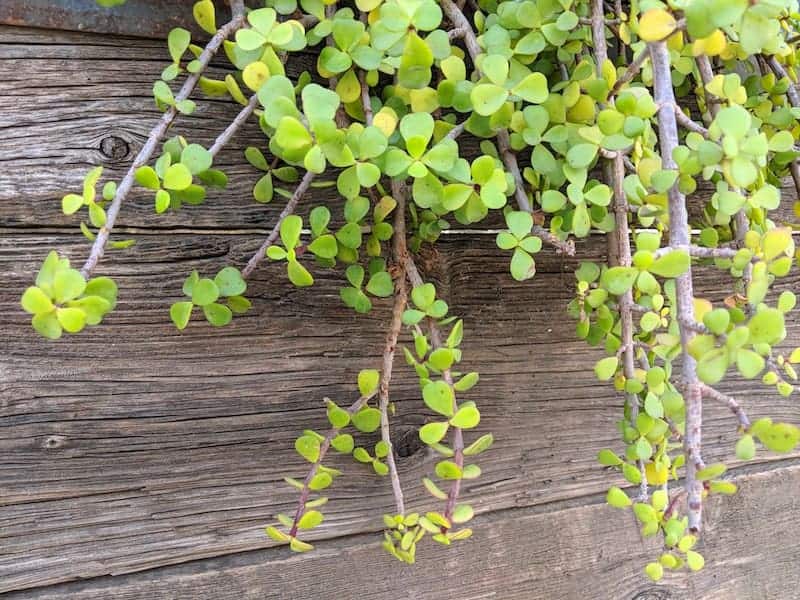
There are two common problems that frequently affect the Elephant feed plant. If you take care to prevent these, your plant should survive and thrive for many years.
Over-watering
Many people have a tendency to water their plants either too much at once, or too frequently. Watering too frequently can be extremely harmful to your Elephant feed plant.
If the soil does not have sufficient time to dry out completely between watering sessions, the roots will eventually start to rot, from sitting in wet soil all the time.
In the winter months, particularly, it is important to avoid watering too often, as the plants are usually dormant and need very little water during this period.
Check Also: Zanzibar Aloe (Aloe Juvenna) - A Care Guide
Pests and bugs
The most common bugs that are likely to attack your Elephant feed plant are mealybugs, spider mites, and whitefly.
Mealybugs cause a powdery white coating that will appear on the leaves, and sometimes even on the stem. The mealybugs secrete a sticky substance that is also often found on the leaves.
Mealybugs are very harmful, because they suck on the leaves, and will eventually make holes in them and devour them completely.
Spider mites look like tiny red dots on the leaves of the plant. They will leave white spots or cotton-looking threads and webs on the underneath of the leaves. If you do not eliminate them, they will spread to other plants very quickly.
Whitefly will leave a sticky coating on the leaves, inhibiting the growth of the plant.
These pests can all be eliminated by using a good pesticide, available from nurseries and garden centers.
Sources:
https://garden.org/plants/view/86813/Elephant-Bush-Portulacaria-afra/


